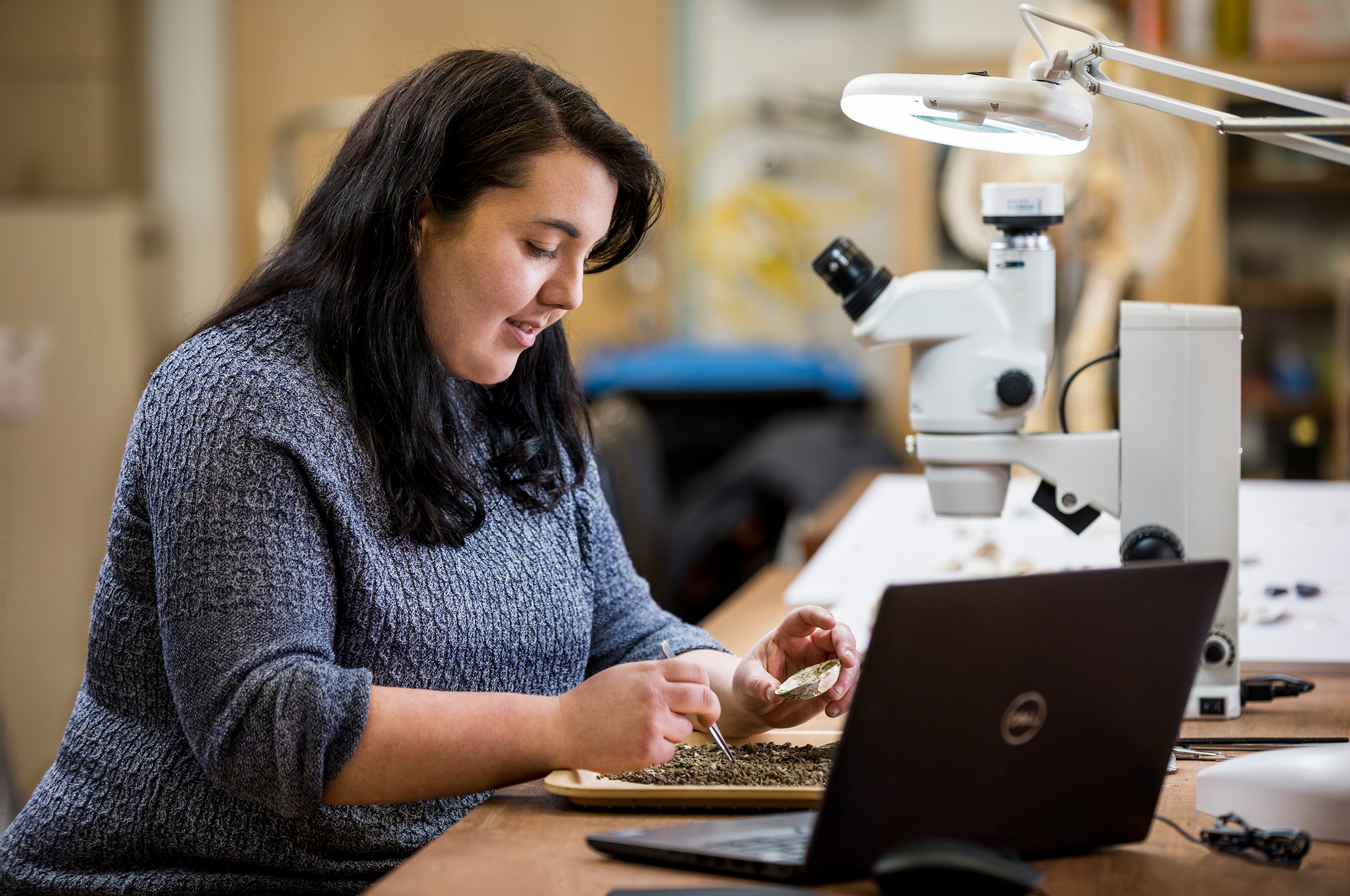Department of Archaeology and History facilities

Our facilities provide Archaeology students with opportunities to engage in research from their first year of study.
Our purpose-built teaching and research facilities, and access to real digs in Australia and overseas, such as the Drimolen Palaeoanthropology Field School in South Africa, give students essential hands-on experience that sets them up for future career success.
We have specialised teaching and research facilities for stone tools analysis, microscopic analysis, archaeomagnetism, geoarchaeology, past environments, hominin palaeobiology, Osteoarchaeology and faunal bone analysis.
We offer object-based teaching in many of our subjects, with the largest comparative hominin fossil collection in Australia, an extensive stone tool collection, osteoarchaeological, zooarchaeological and geological collections. We have facilities for 3D scanning, Reflectance Transformation Imaging (RTI), photogrammetry and 3D printing, and many of our teaching collections have been extensively digitised.
Our outdoor teaching facilities feature multiple simulated excavation areas, based on Indigenous Australian archaeology through to historic Australia. They prepare students for the most common types of archaeology encountered in Australia and give them the skills needed to work on sites of any archaeological period and locale.
Our facilities include:
This laboratory has specialised coring equipment to take sediment samples in range of environments. The maceration lab is set up to extract microfossils (including pollen, plant silica - phytoliths, charcoal, diatoms and other palynofacies) from archaeological sediments and other natural archives for analysis under high-powered microscopes operated by the Department. These proxies allow us to reconstruct how vegetation changed through time, which can be used as an indicator of climate (primarily temperature and precipitation), changing hydrological conditions and variability in fire regimes.
By reconstructing the environment at archaeological sites, we can learn more about what the climate was like, what resources were available to past populations, and how human activity changed the local environment – allowing archaeologists to assess human-environmental interaction in the past.
This is a purpose-built archaeological geophysics and archaeomagnetic research and teaching laboratory and is designed for work on archaeological and fossil bearing sites. This includes both palaeomagnetic and environmental magnetic methods.
The laboratory focuses on human origins research (geochronology, ancient environments and pyrotechnology) and the development of the South East Australian Archaeomagnetic Reference Curve. The laboratory also works on Indigenous Australian and historical period sites in Australia as well as research projects in China, Kenya, Oman, Saudi Arabia, Kyrgyzstan and South Africa.
This laboratory space contains equipment for the 3D scanning and printing of fossil material as well as extensive collections of hominin skulls and skeletons, osteoarchaeological and Australian faunal collections for comparative research.
The hominin casts and 3D prints collection is the largest in Australia with global material, but a significant emphasis on fossil collections from South Africa. 3D scans of material from this laboratory as well as other archaeological collections are hosted on SketchFab. No human remains or casts of Australian remains are held in our collections.
We have a wide range of field-based equipment including several drones for aerial photography and scanning, a drone mounted LiDAR array, laser scanners and total stations, pXRD and pXRF, ground penetrating radar, gradiometry and magnetic susceptibility for conducting geophysical survey and chemical characterisation.
This facility features a rock preparation and microscope laboratory used for the preparation for rock samples, and micromorphological and petrographic analysis. It contains several rock saws, a non-magnetic drill for sampling palaeomagnetic samples, a sediment consolidation system, and a series of equipment for splitting and crushing rock samples. Facilities also include a microscope for undertaking micromorphological analysis.
The laboratory also operates a Malvern Mastersizer, used to measure and quantify sediment sizes in samples from archaeological sites, lakes, swamps and other sources. Variability in grain size tells us about erosional and depositional processes and provide insight into past environmental conditions.
Since 2009, we have taught Archaeology students excavation and recording skills at artificial sites located on La Trobe’s Bundoora campus. The project – known as Teaching Archaeological Research Discipline in Simulation (TARDIS) – uses multiple artificial archaeological sites with a range of replica site types from different times and places in the past. This ranges from international comparatives (for example, a Neolithic village in China or a Pleistocene landscape in east Africa) to typical Australian site types such as a Victorian farmstead, or Aboriginal lithic scatters and hearths.
Both Bachelor and Masters students excavate, record and interpret these sites in a controlled, safe and accessible environment, gaining the core skills they need to excavate real sites on a field school, during an internship, or even in their first job.
